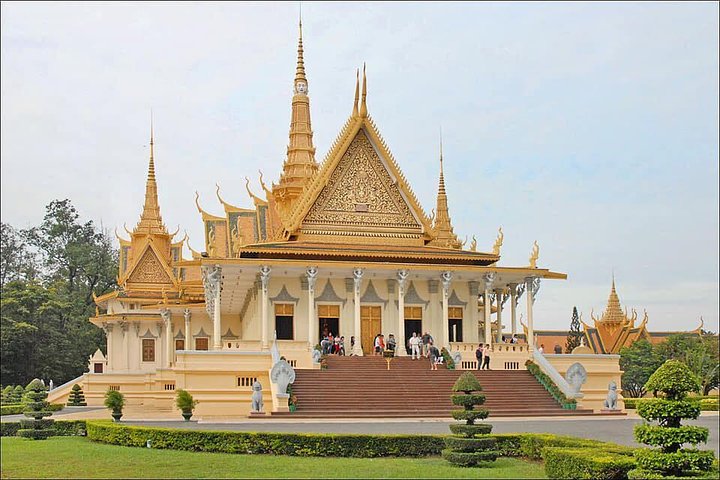Exploring Cambodia’s Dark Past: A Journey Through Tuol Sleng and Choeung Ek
Intrigued by the profound history of Cambodia, I embarked on the Khmer Rouge History Tour in Phnom Penh. Join me as I delve into the harrowing yet essential journey through Tuol Sleng and Choeung Ek, guided by the insightful Sam.
A Journey Through History: The Tuol Sleng Genocide Museum
As I stepped into the Tuol Sleng Genocide Museum, I was immediately enveloped by a somber atmosphere that seemed to echo the cries of the past. This was once the S-21 interrogation and detention center of the Khmer Rouge regime, a place where unspeakable horrors unfolded. The museum, located in the heart of Phnom Penh, serves as a poignant reminder of a tragic period in Cambodia’s history.
Our guide, Sam, was a beacon of knowledge and empathy. His personal connection to the history, through his own family’s stories, added a layer of depth to the experience that no textbook could provide. As we walked through the corridors, Sam shared the stories of those who suffered here, painting a vivid picture of the past. His excellent command of English made the complex history accessible, and his thoughtful approach ensured that the tour was both educational and respectful.
The museum’s exhibits, including photographs, documents, and personal belongings of the victims, were haunting. Each item told a story of suffering and resilience, and I found myself deeply moved by the courage of those who endured such hardship. Meeting some of the survivors was a humbling experience, and Sam’s respectful demeanor was a testament to the importance of honoring their stories.
The Choeung Ek Genocidal Center: A Place of Reflection
After leaving the museum, we traveled to the Choeung Ek Genocidal Center, located about 15 kilometers southwest of Phnom Penh. Once an orchard and a Chinese cemetery, this site became one of the infamous killing fields during the Khmer Rouge regime. Here, more than 17,000 individuals met their tragic end, most having first suffered through torture and deprivation at Tuol Sleng.
The site is now a group of mass graves and a memorial stupa containing thousands of skulls. Walking through the fields, I was struck by the silence that enveloped the area, a stark contrast to the horrors that once took place here. The memorial stupa, with its glass panels displaying the skulls of the victims, serves as a powerful reminder of the atrocities committed and the need for remembrance.
Sam’s guidance was invaluable as he navigated us through the site, sharing insights into the history and significance of each area. His thoughtful commentary encouraged reflection and understanding, allowing us to grasp the magnitude of the suffering endured by the Cambodian people. It was a sobering experience, one that left a lasting impression on my heart and mind.
The Importance of Understanding and Remembrance
The Khmer Rouge History Tour was an unforgettable journey into a dark chapter of history, one that is essential for understanding the resilience and strength of the Cambodian people. Sam’s expertise and personal connection to the history brought a human reality to the tour, making it a deeply moving experience.
This tour is not for the faint-hearted, as it delves into graphic details and stark reminders of inhumanity. However, it is a necessary journey for those who wish to truly understand the impact of the Khmer Rouge regime. It is important to approach the tour with respect and an open mind, acknowledging the suffering of millions and the ongoing effects on the Cambodian people.
I left the tour with a profound sense of gratitude for the opportunity to learn and reflect on this important history. It is a reminder of the importance of remembrance and the need to be messengers of peace, ensuring that such atrocities are never repeated. For those seeking a deeper understanding of Cambodia’s past, this tour is an essential experience.












































